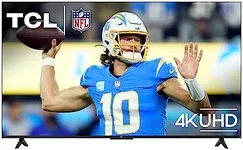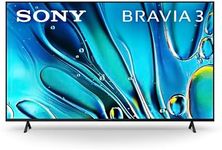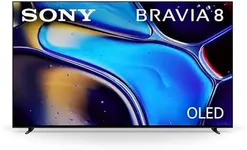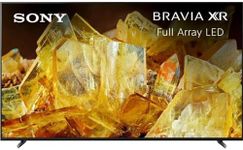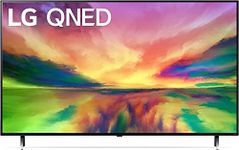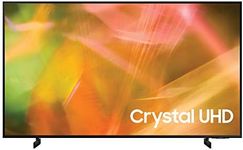Buying Guide for the Best 65 Inch Tvs
Choosing a 65-inch TV is an exciting decision, as this size offers an immersive viewing experience that's great for movies, sports, and gaming. To find the best fit for your needs, it's important to look beyond just the screen size and consider several key features that affect picture quality, sound, connectivity, and overall usability. Understanding these specifications will help you match a TV to your room, viewing habits, and expectations.ResolutionResolution refers to the number of pixels that make up the picture on the screen. The most common resolutions for 65-inch TVs are Full HD (1080p), 4K (Ultra HD), and sometimes 8K. Higher resolution means more detail and sharper images, which is especially noticeable on larger screens. For a 65-inch TV, 4K is generally the sweet spot, offering excellent clarity for most content. 8K is available but not widely supported by content yet, while 1080p may look less sharp at this size. If you watch a lot of high-quality streaming or use the TV for gaming, 4K is usually the best choice.
Panel Type (LED, OLED, QLED, etc.)The panel type determines how the TV produces images and affects things like color, contrast, and viewing angles. LED TVs are common and offer good brightness, while QLED TVs use a special layer to enhance color and brightness further. OLED TVs provide deeper blacks and better contrast because each pixel lights up individually. If you want vibrant colors and watch TV in a bright room, QLED or high-end LED might be best. If you prefer deep blacks and watch in a darker room, OLED is a great choice. Consider your room lighting and what kind of picture quality matters most to you.
Refresh RateRefresh rate is how many times per second the TV updates the image, measured in Hertz (Hz). Common values are 60Hz and 120Hz. A higher refresh rate makes fast-moving scenes look smoother, which is important for sports and gaming. If you mostly watch movies and TV shows, 60Hz is usually fine. If you play video games or watch a lot of sports, 120Hz can provide a smoother experience.
HDR SupportHDR stands for High Dynamic Range, which allows the TV to show a wider range of colors and better contrast between bright and dark areas. There are different types of HDR, like HDR10, Dolby Vision, and HLG. More advanced HDR formats can make movies and shows look more lifelike. If you enjoy watching visually stunning content or want the best picture quality, look for a TV with good HDR support. If you mostly watch regular TV or older content, HDR may be less important.
Smart TV FeaturesSmart TV features refer to the built-in software that lets you stream content, use apps, and connect to the internet. Some TVs have more user-friendly interfaces and a wider selection of apps. If you plan to stream a lot of content or want to use voice assistants, make sure the TV's smart platform supports your favorite services and is easy to navigate. If you use external streaming devices, the built-in features may be less important.
Connectivity (HDMI, USB, etc.)Connectivity options determine how many devices you can plug into your TV, such as game consoles, soundbars, or streaming sticks. Look for the number and type of HDMI ports, as well as USB and audio outputs. If you have several devices, make sure the TV has enough ports to avoid constantly switching cables. Think about what you want to connect now and in the future.
Sound QualitySound quality is how well the TV's built-in speakers reproduce audio. Larger TVs often have more room for better speakers, but many still benefit from an external soundbar or speaker system. If you want clear dialogue and immersive sound without extra equipment, look for TVs with enhanced audio features. If you already have or plan to buy a sound system, the built-in sound may be less important.
Viewing AngleViewing angle is how well the picture quality holds up when you watch the TV from the side rather than straight on. Some panel types, like OLED, maintain color and contrast better at wide angles, while others may look washed out. If your seating is spread out or you often watch TV with a group, a wider viewing angle is beneficial. If you usually sit directly in front of the TV, this is less of a concern.
Size and PlacementWhile you've chosen a 65-inch TV, it's important to consider the actual dimensions and how it will fit in your space. Check the width, height, and depth, especially if you have a TV stand or plan to mount it on the wall. Make sure you have enough space for comfortable viewing distance, which is typically about 8 to 10 feet for a 65-inch screen. Think about your room layout and where people will be sitting.
